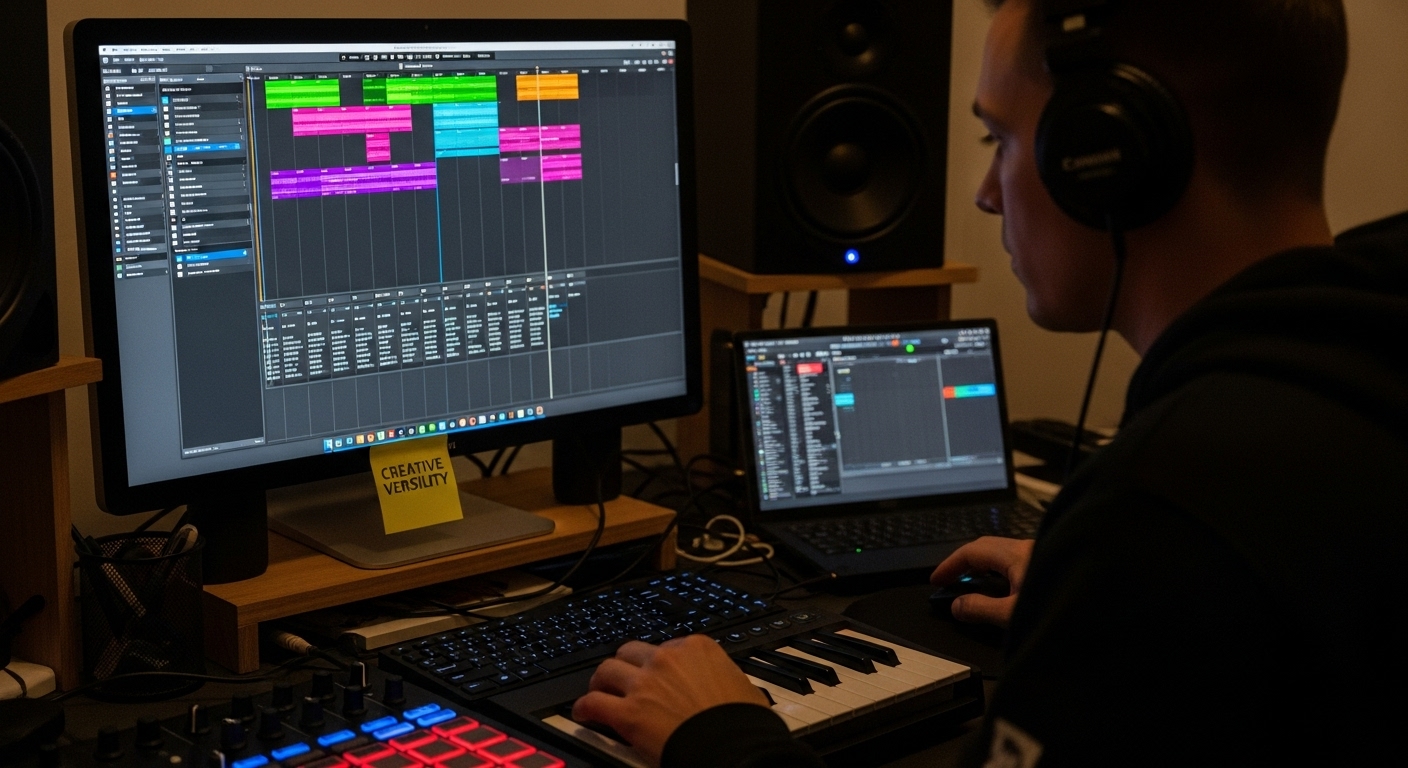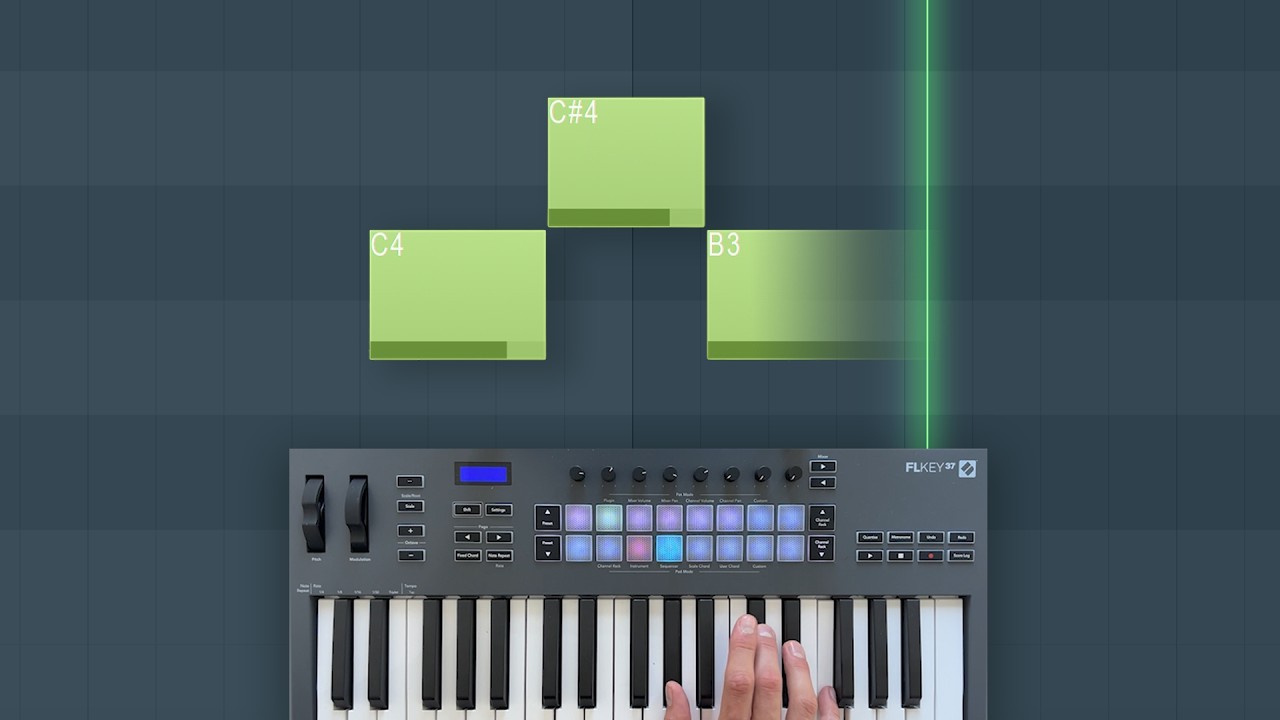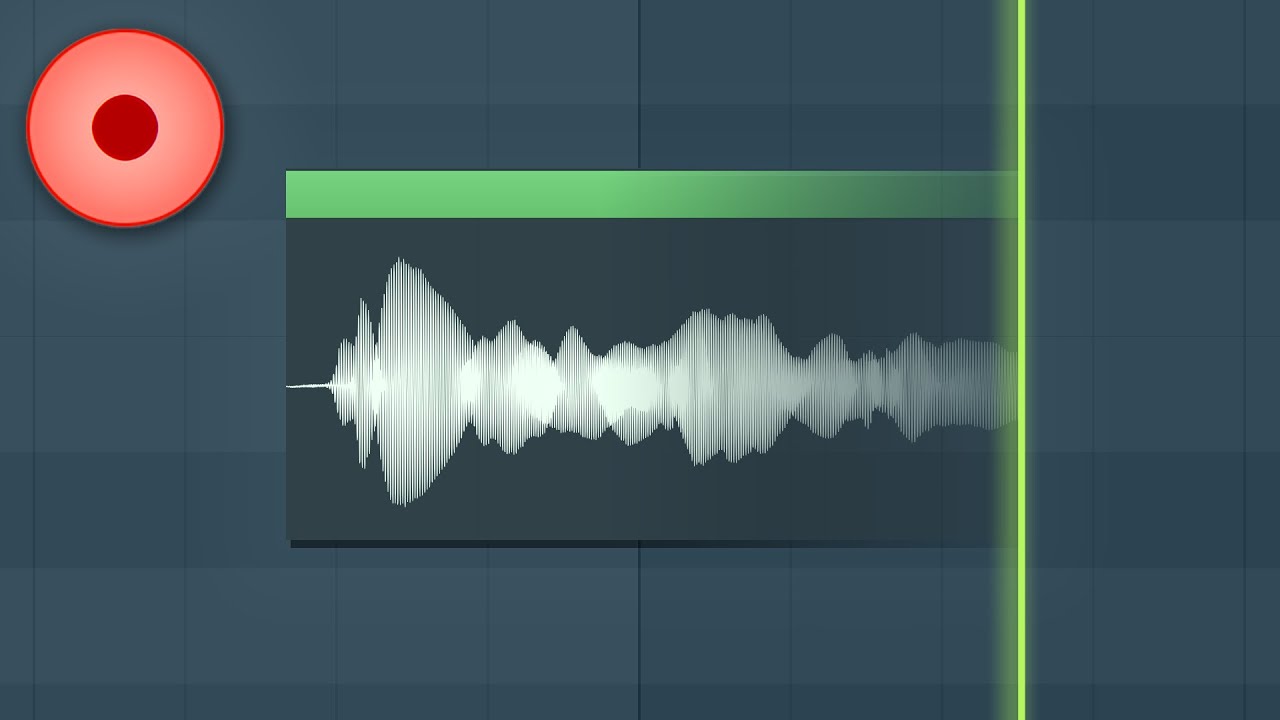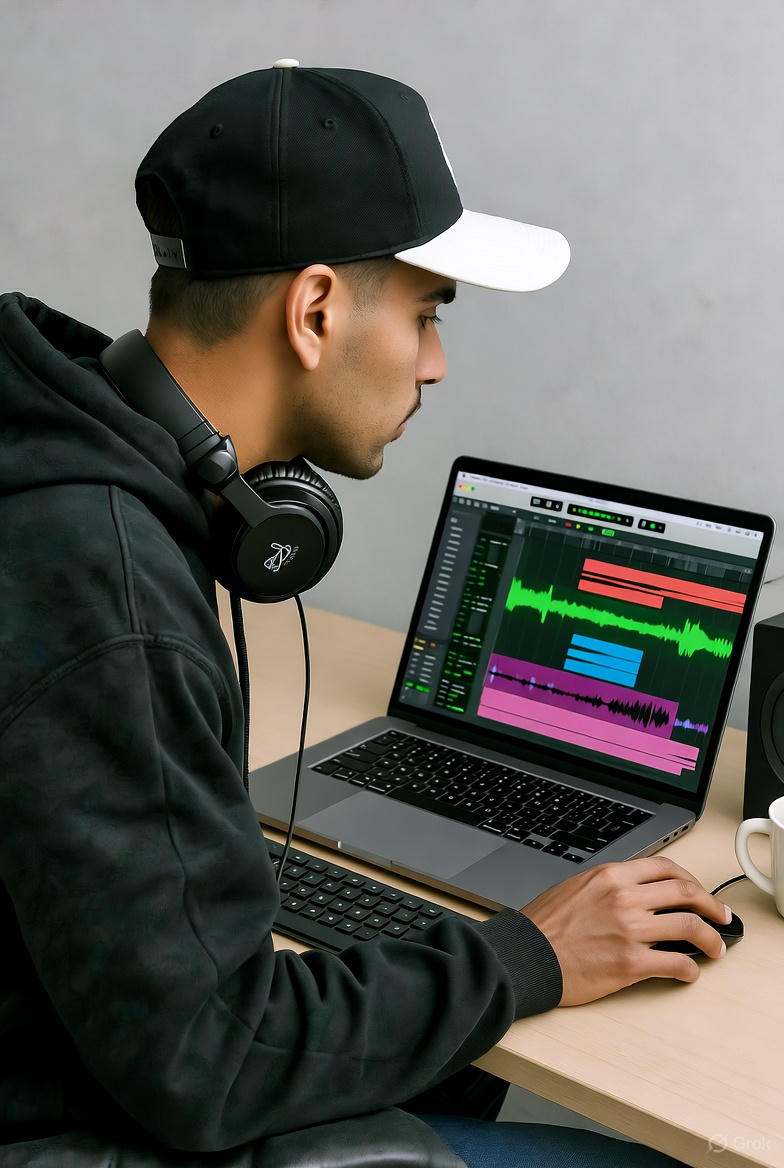!Let Us HELP YOU!
We have a lot of curated content on this blog.
Take this simple 20 second Quiz to Help You
Find The Exact Content You Are Looking For!
Instrumental tracks unlock a world where music speaks without words. Think about this. Some of the most celebrated film scores contain zero lyrics but drive entire emotional arcs just through sound. Most people assume you need vocals to tell a story in music. It turns out the real magic happens when instruments alone shape the whole journey.
Table of Contents
- Defining Instrumental Tracks: What Are They?
- The Importance of Instrumental Tracks in Music Production
- How Instrumental Tracks Influence Emotion and Atmosphere
- Key Elements and Techniques in Creating Instrumental Tracks
- Real-World Applications of Instrumental Tracks in Various Genres
Quick Summary
| Takeaway | Explanation |
| Instrumental tracks convey emotion without lyrics. | They express complex feelings through melodies and rhythms alone, allowing for a richer emotional experience. |
| Creative flexibility is key in music production. | Producers enjoy unrestricted storytelling through sound, enhancing both artistic freedom and listener engagement. |
| Instrumental tracks are vital for diverse media applications. | They are used in film, advertising, and gaming, providing emotional depth without words, appealing to a wide audience. |
| Technical skills enhance production quality. | Mastery of musical theory and sound design enables producers to create intricate, engaging compositions that resonate emotionally. |
| Instrumental music transcends cultural barriers. | Its universal language allows it to connect with listeners globally, making it a powerful communication tool in various contexts. |
Defining Instrumental Tracks: What Are They?
Instrumental tracks represent a fascinating musical form where sound and emotion are communicated purely through musical instruments, without vocal lyrics. Understanding these tracks involves exploring their unique characteristics and musical significance.
The following table summarizes the key features and characteristics of instrumental tracks, organizing their core elements for easy reference.
| Feature/Characteristic | Description |
| Absence of Lyrics | Performed entirely by instruments, with no sung or spoken words. |
| Emphasis on Melody and Rhythm | Relies on intricate melodies and rhythms to convey emotion and narrative. |
| Transcends Language Barriers | Can be understood and appreciated regardless of language or culture. |
| Focus on Instrumental Technique | Highlights musicianship, arrangement, and technical skill. |
| Creative Freedom | Allows artists to explore new sonic ideas without constraints of lyrics. |
| Emotional Storytelling | Communicates complex emotional journeys using only musical elements. |
| Versatility Across Genres | Found in many styles, from classical and jazz to electronic and film scores. |
The Core Definition of Instrumental Music
An instrumental track is a musical composition performed exclusively by instruments, completely absent of sung or spoken lyrics. According to Britannica, instrumental music focuses on the expressive capabilities of musical instruments to convey complex emotional narratives and artistic intentions.
![]()
Key characteristics of instrumental tracks include:
- Pure musical expression through sonic elements
- Emphasis on melodic and rhythmic complexity
- Ability to transcend language barriers
- Deeper focus on instrumental technique and arrangement
Musical Diversity in Instrumental Compositions
Instrumental tracks span numerous genres and styles, ranging from classical symphonies to contemporary electronic beats. They allow musicians extraordinary creative freedom, enabling them to communicate intricate emotions and stories without relying on verbal language.
These tracks can emerge from various musical traditions like jazz improvisation, classical orchestral works, electronic music production, and experimental sound design. Check out our guide on making R&B dance instrumentals to understand how producers craft these sonic landscapes.
Why Instrumental Tracks Matter
Instrumental tracks offer listeners a unique auditory experience where musical instruments become the primary storytellers.
They challenge listeners to interpret musical narratives through pure sound, engaging imagination and emotional intelligence in ways vocal music cannot always achieve.
Producers and musicians leverage instrumental tracks to explore complex musical ideas, experiment with sonic textures, and create immersive soundscapes that transcend traditional song structures. Whether in film scoring, background music, or standalone musical expressions, instrumental tracks represent a powerful medium of artistic communication.
The Importance of Instrumental Tracks in Music Production
Instrumental tracks serve as foundational elements in modern music production, offering producers unprecedented creative flexibility and artistic expression. Understanding their significance reveals how these tracks transform musical composition across multiple genres and professional contexts.
Creative Versatility in Music Production
Instrumental tracks provide musicians and producers with extraordinary creative freedom. They enable sonic storytelling without linguistic constraints, allowing artists to communicate complex emotions and narratives purely through musical arrangement. Our guide on melodic techno beats demonstrates how producers can craft intricate soundscapes using instrumental techniques.
Key advantages of instrumental tracks in music production include:
- Complete creative control over musical narrative
- Ability to transcend cultural and linguistic boundaries
- Flexibility for licensing in film, television, and commercial media
- Enhanced focus on technical musical composition

Professional Applications and Revenue Streams
Instrumental tracks represent significant economic opportunities for music producers. They are crucial in multiple professional domains such as film scoring, advertising, video game development, and background music production. Many producers generate substantial income by creating high quality instrumental tracks that can be licensed across various media platforms.
WEBSITE RESOURCES FOR MUSICIANS
This table compares how instrumental tracks are used and valued across different professional contexts, helping clarify their distinct roles within creative industries.
| Application Area | Primary Purpose | Notable Features |
| Film Scoring | Enhance and underscore narrative emotions | Shapes emotional arcs, sets atmosphere |
| Advertising | Create memorable brand associations and moods | Evokes specific emotions, universal appeal |
| Video Game Development | Build immersive, interactive environments | Adaptive to gameplay, supports engagement |
| Background Music | Maintain ambiance without distracting from primary activities | Subtle, non-intrusive, supports various settings |
| Standalone Music | Artistic self-expression and technical showcase | Focus on musicianship, complex arrangements |
The versatility of instrumental tracks allows producers to target diverse markets. Electronic dance music producers, hip hop beat makers, and classical composers all leverage instrumental compositions to expand their creative and financial opportunities.
Technical Skill Development
Producing instrumental tracks demands advanced musical skills and technical proficiency. Musicians must master complex arrangement techniques, understand intricate sound design principles, and develop nuanced approaches to expressing emotion without verbal communication.
Mastering instrumental track production requires deep understanding of musical theory, sound engineering, and creative composition. Producers must strategically layer instruments, create dynamic sonic landscapes, and maintain listener engagement through pure musical expression. This technical challenge makes instrumental track production a sophisticated art form that continually pushes musical boundaries.
How Instrumental Tracks Influence Emotion and Atmosphere
Instrumental tracks possess a profound ability to shape emotional landscapes and create immersive sonic environments. By leveraging musical elements like melody, rhythm, and timbre, these compositions communicate complex emotional narratives without relying on verbal language.
The Psychological Mechanisms of Musical Emotion
Research indicates that instrumental music triggers deep psychological responses by directly engaging neural pathways associated with emotional processing. According to scientific research, instrumental music can significantly modulate emotional perception and cognitive states.
Key emotional triggers in instrumental tracks include:
- Harmonic complexity and tension resolution
- Dynamic range and volume fluctuations
- Rhythmic patterns and tempo changes
- Timbral characteristics of different instruments
Sonic Storytelling Without Words
Instrumental tracks function as powerful emotional conduits, enabling musicians to craft intricate narratives through pure sound. Explore our breakdown of reimagining pop instrumentals to understand how producers create emotional depth without lyrics.
Producers strategically manipulate musical elements to evoke specific emotional responses. A minor key might suggest melancholy, while staccato rhythms could communicate urgency or excitement. This nuanced approach allows instrumental tracks to communicate sophisticated emotional landscapes across cultural boundaries.
Practical Applications in Different Contexts
Beyond musical expression, instrumental tracks play critical roles in various professional domains. Film composers use instrumental music to enhance narrative emotional arcs, while advertisers leverage these tracks to create specific mood environments that resonate with target audiences.
The universal language of instrumental music transcends linguistic barriers, making it a powerful tool for emotional communication. By understanding and strategically employing musical elements, producers can create immersive sonic experiences that connect deeply with listeners across different cultural and personal contexts.
Key Elements and Techniques in Creating Instrumental Tracks
Creating compelling instrumental tracks requires a sophisticated blend of technical skill, musical understanding, and creative innovation. Producers must strategically combine various musical elements to craft engaging compositions that communicate complex emotions and narratives without lyrics.
Structural Foundation and Composition
According to University of Nebraska-Lincoln research, effective instrumental composition relies on understanding structural form and advanced musical techniques. The foundational elements of instrumental track creation involve careful arrangement and strategic musical development.
Critical compositional techniques include:
- Establishing clear melodic themes
- Developing intricate harmonic progressions
- Creating dynamic rhythmic variations
- Implementing strategic structural transitions
Sound Design and Instrumental Layering
Sound design represents a crucial aspect of instrumental track production. Producers must skillfully blend different instrumental textures, creating complex sonic landscapes that maintain listener engagement. Learn more about advanced beat-making techniques to understand sophisticated layering approaches.
Successful instrumental tracks leverage sophisticated sound design principles. This involves selecting complementary instruments, understanding frequency relationships, and creating space within the musical arrangement. Producers must balance each instrumental element to prevent sonic clutter while maintaining rich, immersive soundscapes.
Emotional Narrative and Musical Expression
Beyond technical considerations, instrumental tracks demand a deep understanding of musical storytelling. Producers must translate emotional complexity into pure sonic expression, using musical parameters like dynamics, timbre, and harmonic tension to communicate nuanced feelings.
Mastering instrumental track creation requires continuous experimentation and refined musical sensibility. Producers must develop an intuitive understanding of how different musical elements interact, creating compositions that resonate emotionally with listeners. The most compelling instrumental tracks transcend mere technical proficiency, offering genuine artistic expression through sophisticated musical language.
Real-World Applications of Instrumental Tracks in Various Genres
Instrumental tracks demonstrate remarkable versatility across different musical genres, serving critical functions beyond traditional musical performance. Their adaptability allows them to transform creative expression, communication, and audience engagement in diverse professional contexts.
Genre-Specific Instrumental Approaches
According to Encyclopedia Britannica, instrumental tracks play unique roles across multiple musical landscapes. Each genre leverages these tracks differently, showcasing their extraordinary communicative potential.
Key genre-specific applications include:
- Classical music: Symphonic narrative development
- Jazz: Improvisation and spontaneous musical dialogue
- Electronic music: Rhythmic and textural exploration
- Film scoring: Emotional landscape and narrative enhancement
Media and Commercial Applications
Instrumental tracks have become fundamental in numerous media production contexts. Learn more about music production software capabilities to understand how professionals create these versatile compositions.
Music producers and composers strategically deploy instrumental tracks in advertising, video game design, podcast backgrounds, and multimedia presentations. These tracks provide emotional resonance without linguistic barriers, making them powerful communication tools across international markets.
Performance and Creative Expression
Beyond commercial applications, instrumental tracks represent profound artistic statements. Musicians use these compositions to explore complex emotional landscapes, demonstrating that profound communication transcends verbal language.
Instrumental tracks enable performers to showcase technical virtuosity, experiment with sonic textures, and create immersive musical experiences. They challenge listeners to engage more deeply with music, interpreting emotional narratives through pure sound rather than relying on lyrical explanation. This approach demands heightened musical literacy and emotional intelligence from both creators and audiences.
Ready to Make Your Own Powerful Instrumental Tracks?
Are you struggling to turn your creative ideas into polished instrumental music? After reading about the emotional impact and technical detail behind great instrumental tracks, you might wonder where to start with beat-making or how to choose the right tools. Many producers face confusion when it comes to everything from sound design and arrangement to selecting the best DAW. If you want to overcome these challenges and start making standout instrumentals in any genre, you are not alone.
Stop waiting to upgrade your skills. Visit How To Make Beats Blog for step-by-step guides, real gear reviews, and detailed tutorials on everything from FL Studio techniques to cutting-edge melodic techno production tips. Take control of your music now. Discover how our resources can help you build professional-quality instrumental tracks today.
Frequently Asked Questions
What is an instrumental track?
An instrumental track is a musical composition performed solely by instruments, without any vocal lyrics. It emphasizes the expressive capabilities of musical instruments to convey emotions and narratives.
Why are instrumental tracks important in music production?
Instrumental tracks provide creative freedom and flexibility for musicians and producers, enabling them to communicate complex emotions without linguistic constraints. They are also essential for various professional applications such as film scoring, advertising, and video game development.
How do instrumental tracks influence emotions?
Instrumental tracks can evoke deep emotional responses through musical elements like melody, rhythm, and timbre. They communicate feelings and narratives without words, engaging listeners’ imaginations and emotional intelligence.
What are some common techniques for creating instrumental tracks?
Key techniques include establishing clear melodic themes, developing intricate harmonic progressions, and implementing dynamic rhythmic variations. Additionally, effective sound design and emotional narrative development are crucial for crafting engaging instrumental compositions.
Recommended
- Make Beats in Ableton: Your Guide to Mastering Ableton 12
- Making a R&B Dance Instrumental: Guide to Crafting R&B Music
- Melodic Techno Beats Tips: Elevate Your Production Game
- Remaking Chihiro Instrumental by Billie Eilish: Breakdown



